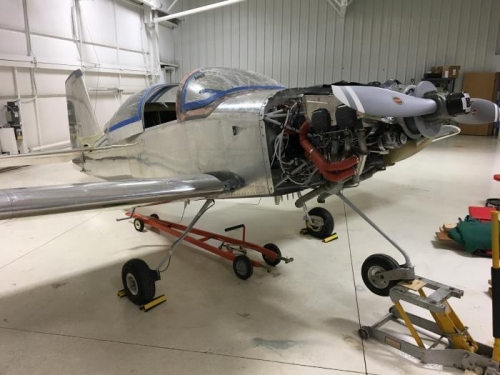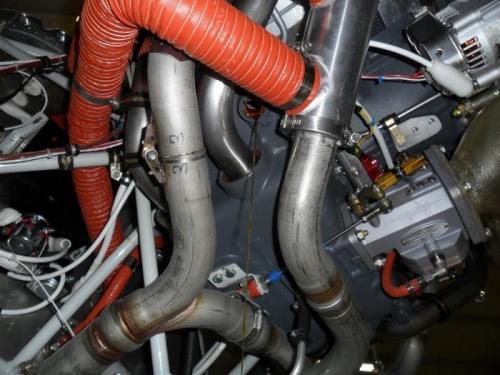
|

|
|

|
Dave's RV-7A Builder's Log

|
Date: 8-5-2017
|
Number of Hours: 4.50
|
Manual Reference:
|
Brief Description: Fuel system testing and misc finish work
|

|
I ran out to the hangar yesterday with a box of items I needed for airworthiness inspection, final assembly and first flight, to include fuel placards, a fire extinguisher, CO2 detector, various lubricants, etc. I also brought a couple of gas cans to be used for filling the fuel tanks and completing my fuel flow and quantity testing. Before I left, I put about 2 ½ gallons of 100LL in each tank…with high hopes for no leaks when I returned. I was rewarded this morning to find all the fuel still where I had left it—a good start to the day.
In order to check electric boost pump fuel flow and determine unusable fuel, the aircraft must be placed in a nose high position to simulate worst case in flight—low on fuel in a landing attitude. I used my motorcycle jack to raise the nose as high as I could without the tail touching the hangar floor, and was able to get about 18 degrees nose up. Once I had the aircraft secure, I disconnected the fuel line at the servo, and rigged up a platform to hold the gas tank in place with the hose hanging inside. With fingers crossed, I flipped on the boost pump and after about 10 seconds fuel started running into the can. With that, I reset everything and ran both tanks for 60 seconds to determine the flow rate on boost pump alone—I was getting just under 40 GPH on both sides, more than adequate. The best news was no leaks! Of course this was an unpressurized test; the real check will be with lines attached and fuel pressure on the system. I also ran both tanks dry and found just a couple of ounces unusable, so to be safe I’ll call it ½ gallon per side.
Once the fuel testing was finished, I pulled the lower spark plugs to drain any remaining preservative oil (most of it seems to have dripped on the hangar floor over the last year), opened both sump drains and got only a little residual oil out. After ensuring the plugs were in, I added 7 quarts of new oil, safety-wired the drain plugs and then reinstalled the lower spark plugs and called it a day.
|

|

Fuel flow testing preparation
|

|

Draining preservative oil
|

|
|

|

|

|
|

|

|
Copyright © 2001-2024 Matronics. All Rights Reserved.
|

